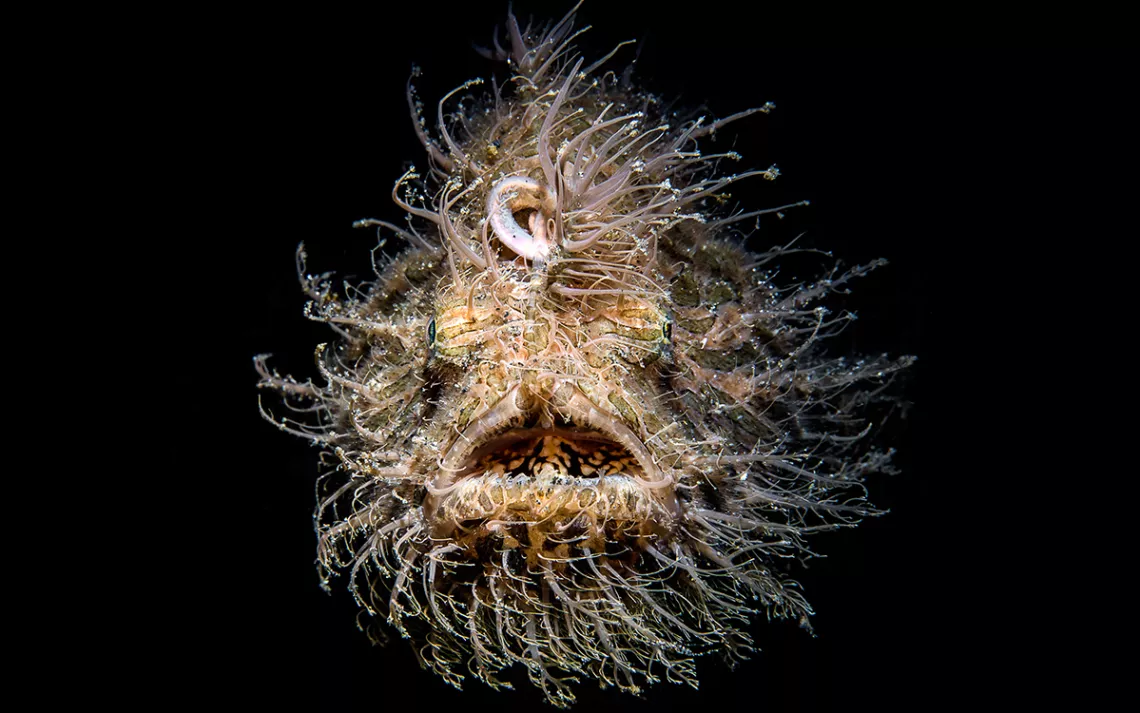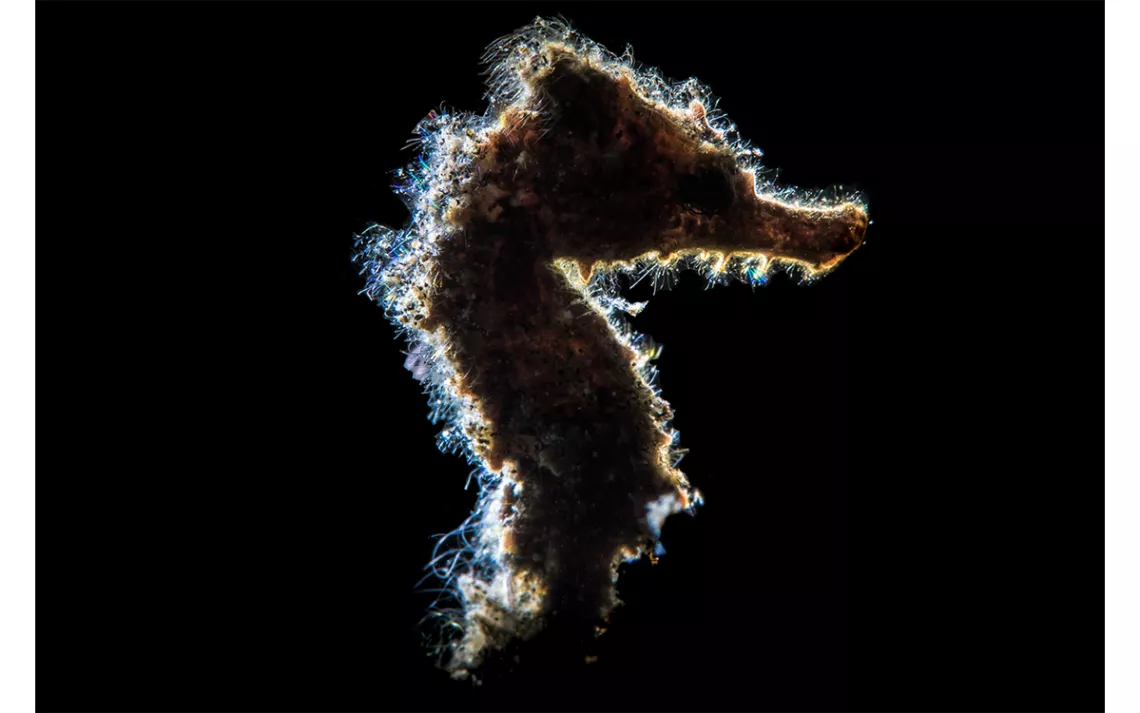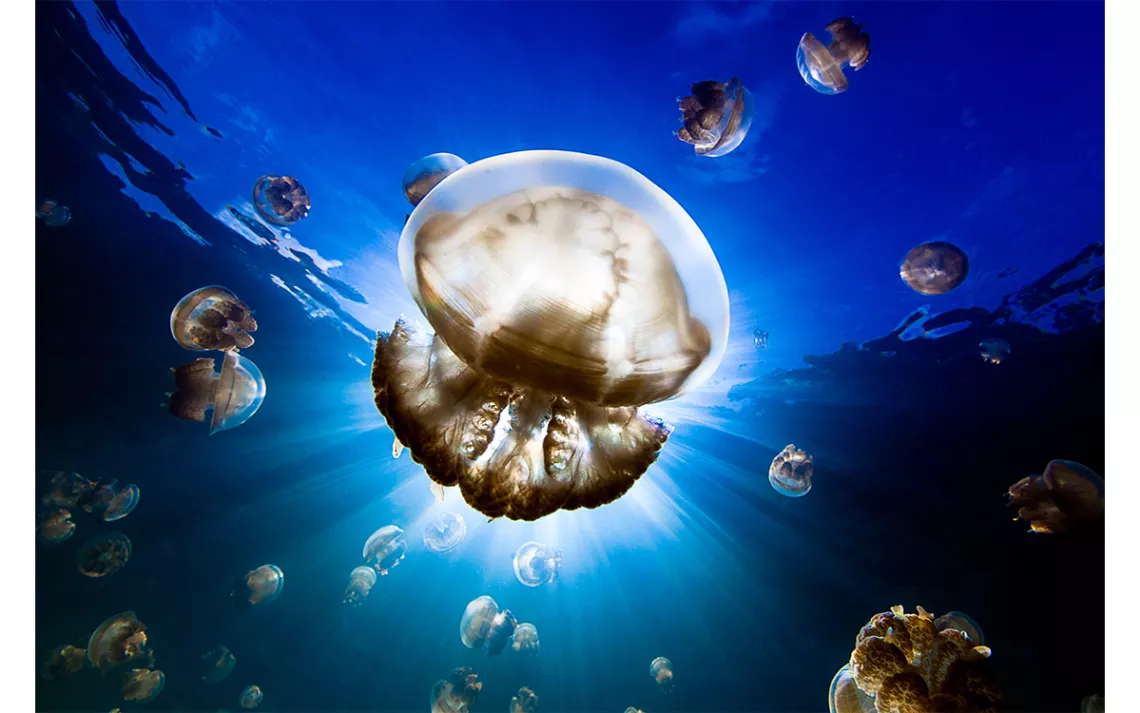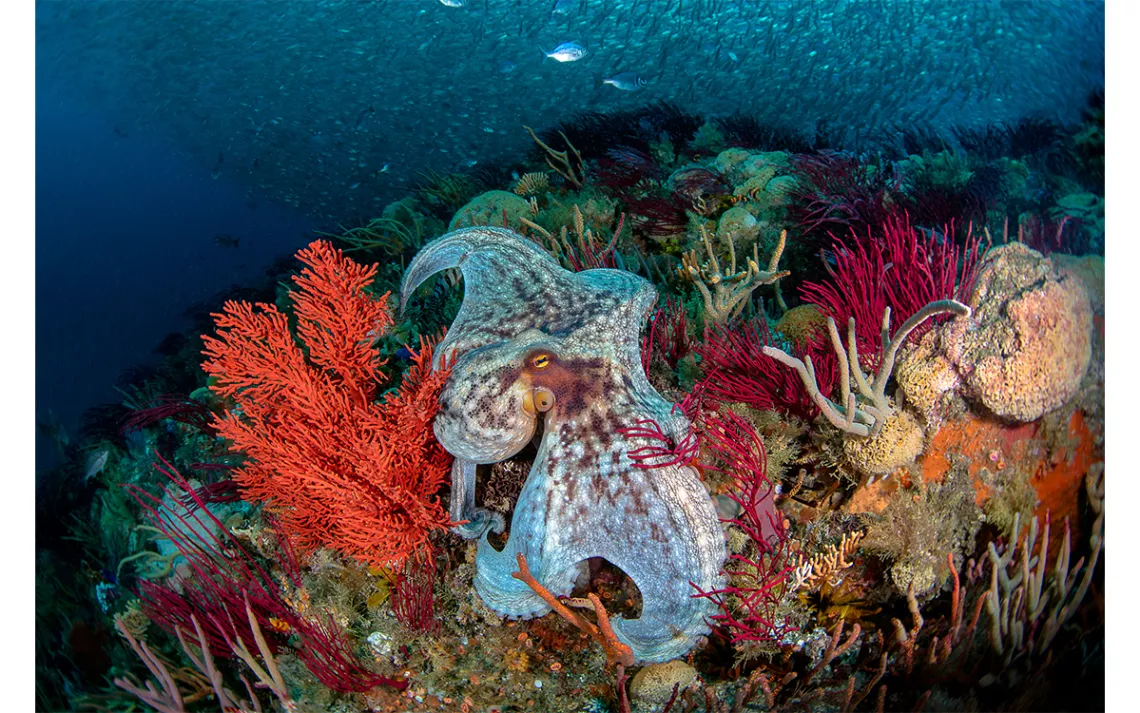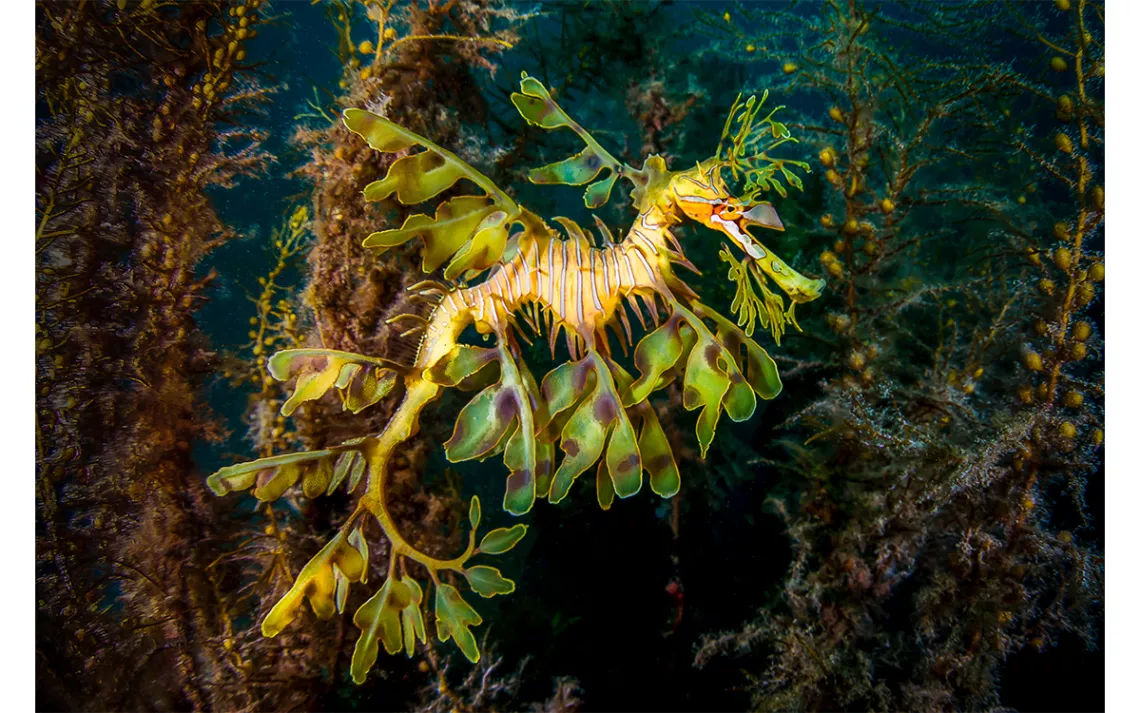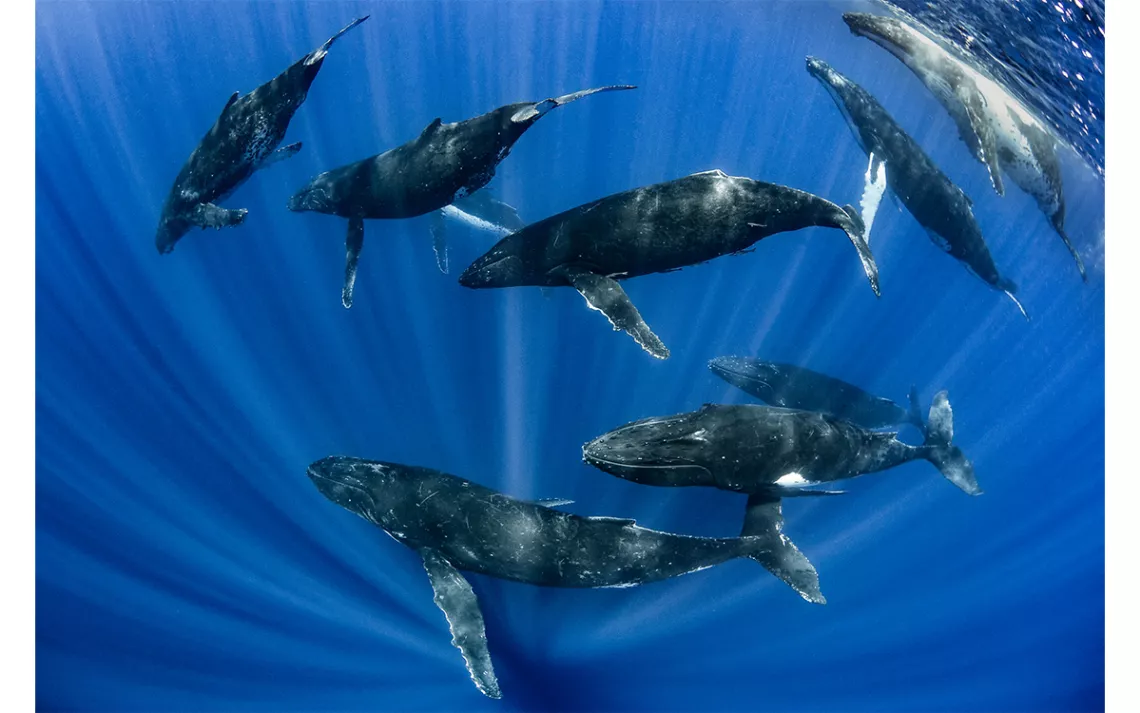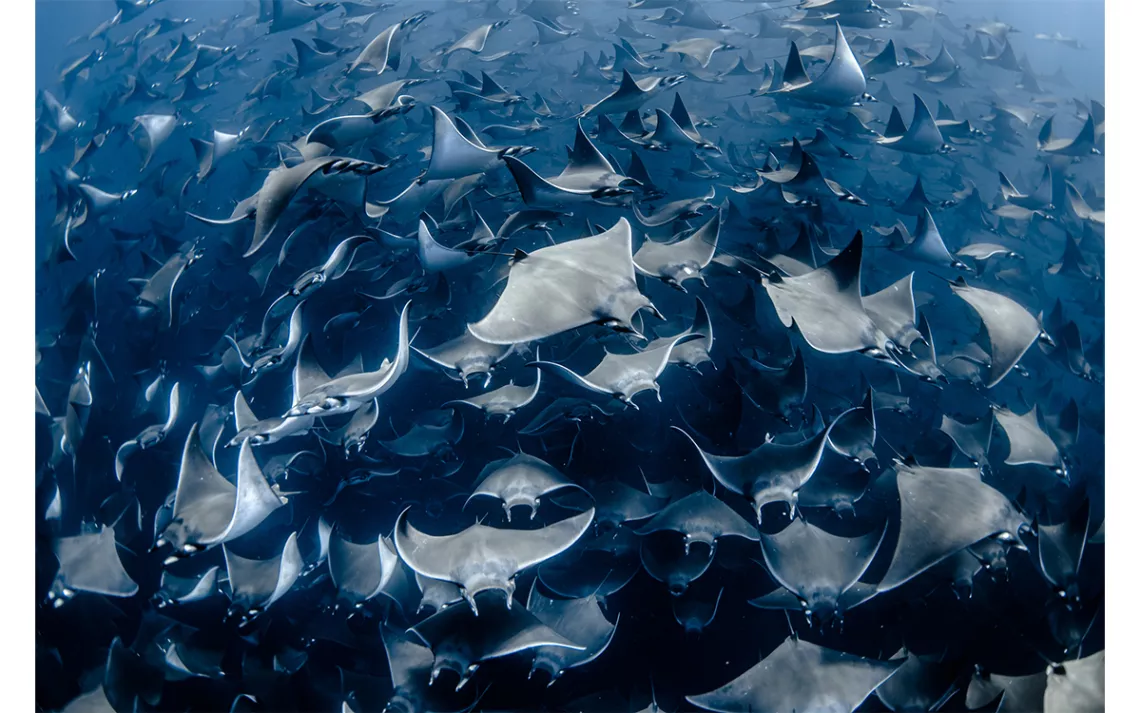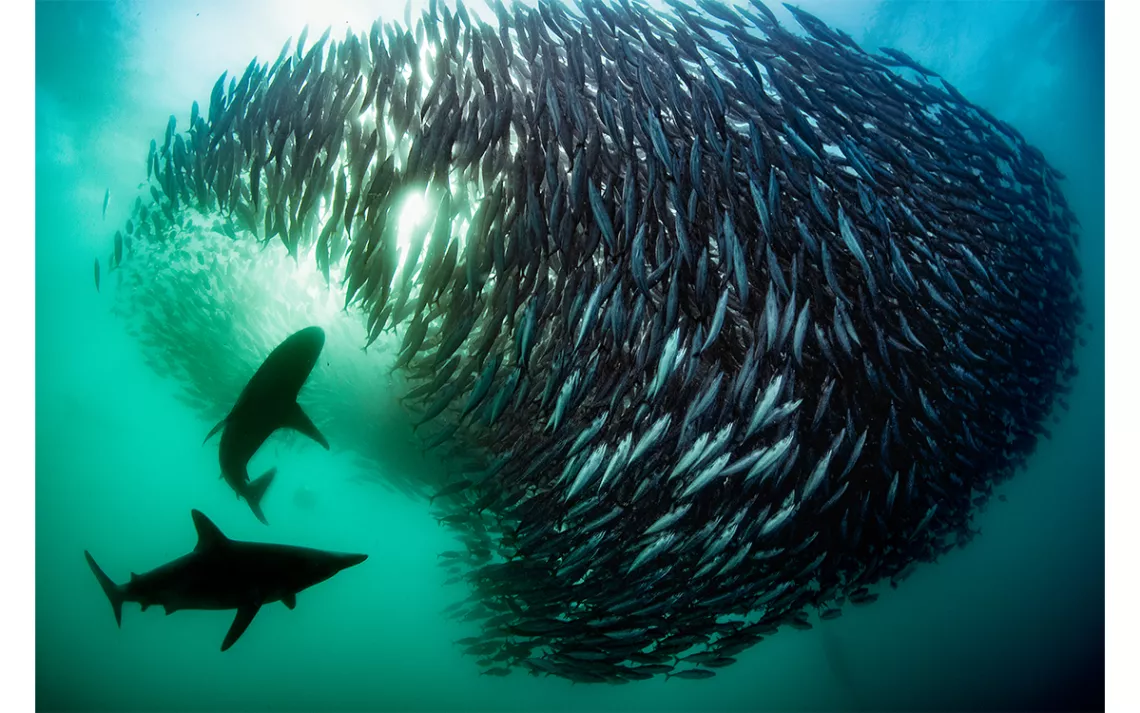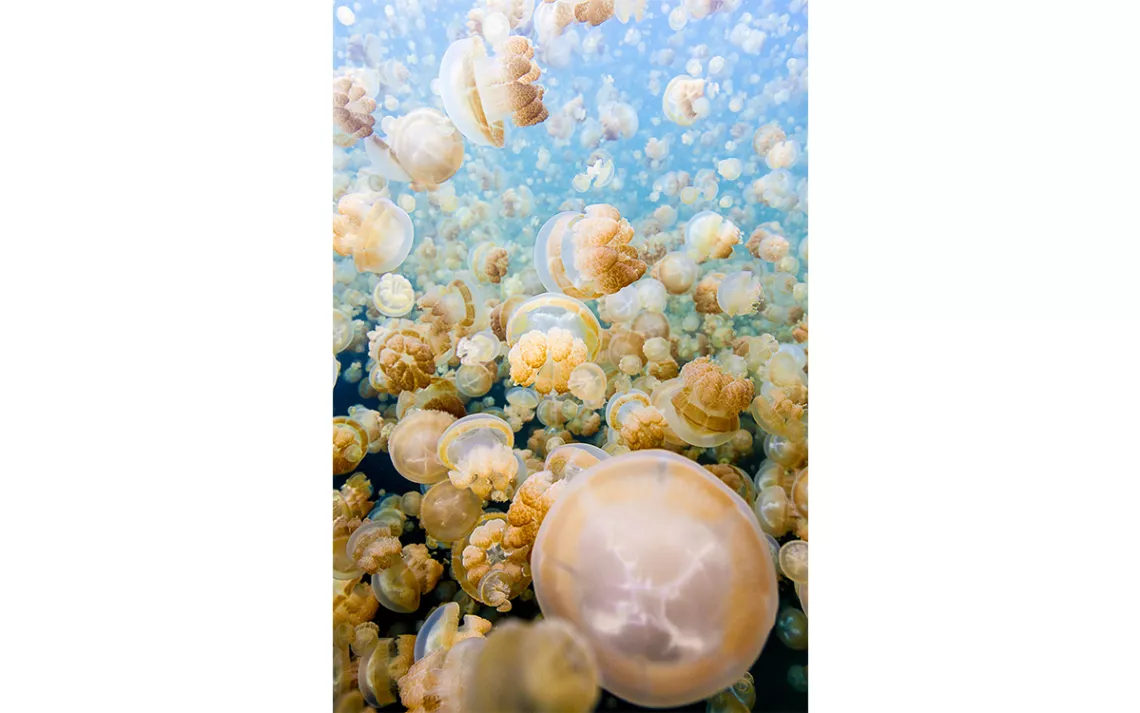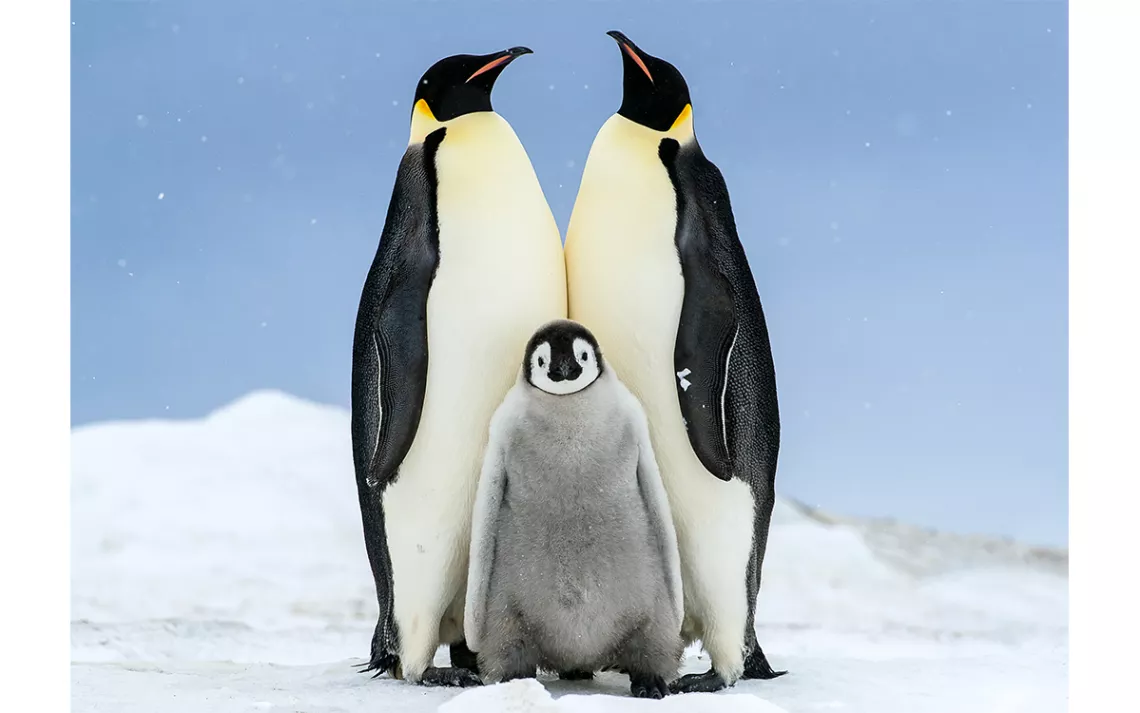Photographing Ocean Creatures Great and Small
For Nadia Aly, it’s all about life under the sea
Photos and captions by Nadia Aly
Nadia Aly received her first camera when she was just seven years old. Photography was always a hobby of hers growing up, and she even studied it in college, but she didn’t see herself becoming a professional. “I was heavily into tech and social media, so I thought that's where I was going,” she told Sierra. After graduate school, she moved from Toronto to California to work for Microsoft.
Then in 2010, Aly entered a video contest on a lark and won first prize—a scuba diving trip to Fiji. She had gone scuba diving before as a teen on family vacations, but after Fiji, she realized how much she loved it. In her spare time, she started scubadiverlife.com, a website dedicated to celebrating the sport and sharing information. By 2012, the site was getting half a million visitors a month, and she decided to devote herself to it fully.
“I knew that I needed to get an underwater camera and make really good content. That's all I knew,” she said. So she bought one and signed up for a dive trip. From there, Aly was off and swimming, traveling 200-plus days a year to Indonesia, Australia, the Bahamas, and other diving destinations around the globe and promoting her website to dive operators, all while developing her skill as an underwater photographer. “I just picked it up very quickly,” she said.
Eventually, she started a business leading expeditions and now hosts numerous trips a year to places like Tonga to swim with humpback whales (she calls them “the gods of the sea”) and to South Africa to witness the sardine run (“it's just every type of predator that you could think of chasing the fish”).
Aly’s first love, though, remains underwater photography. It’s not so much the ocean that fuels her passion but the creatures she finds within it. “I can't just go on a dive and take pictures of coral—that doesn't do anything for me,” she told Sierra. But an octopus the size of a pinky nail? She’ll happily spend an entire dive taking pictures of that.
This attention to detail is evident in the results—vibrant, colorful portraits of creatures large and small that showcase the ocean’s biodiversity. In Aly’s pictures, the sea forms the backdrop for intricately textured animals like the hairy frogfish, an effect she says she achieves in her editing process by bumping up the luminance or saturation. “I'm trying to really pop that animal and showcase that it's not scary,” she said. “I meet so many people that won't go into the ocean because they're scared, and I think that it really comes down to helping educate people about the different animals and why they should care about the ocean.”
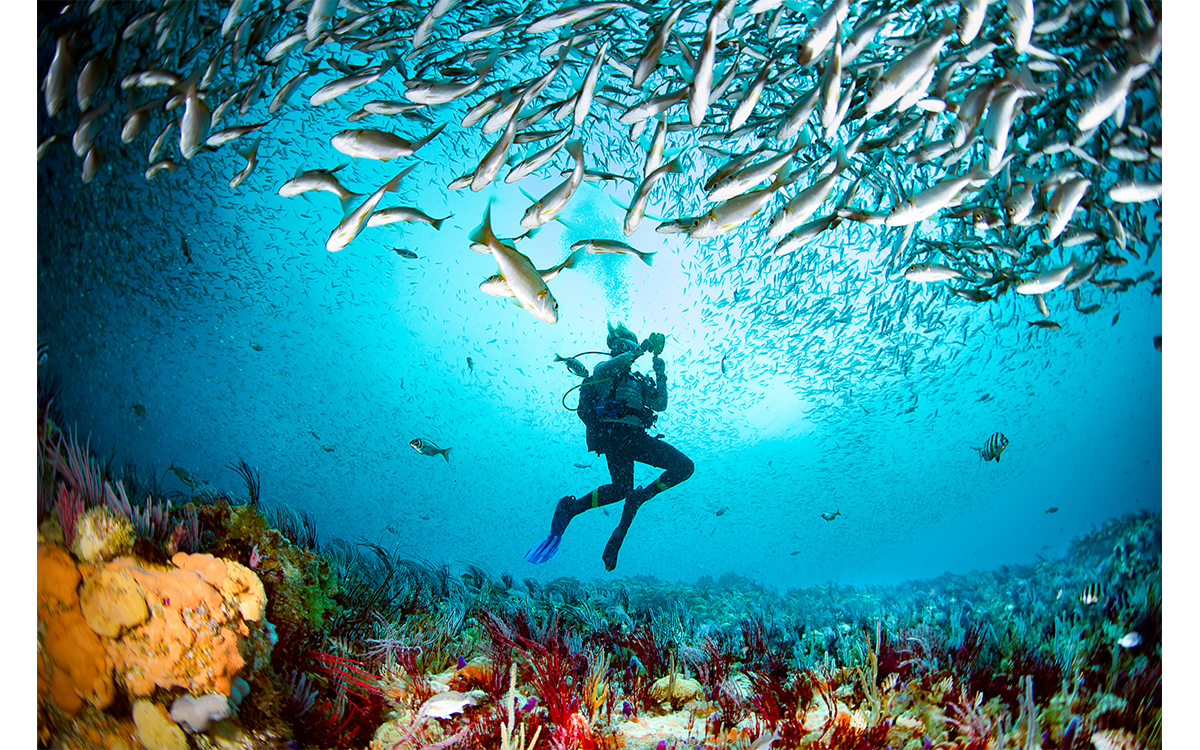
Some bait ball action over the reefs in South Africa, one of my favorite places to dive in the world. On this day, we had crystal-clear water with tons of baitfish everywhere.
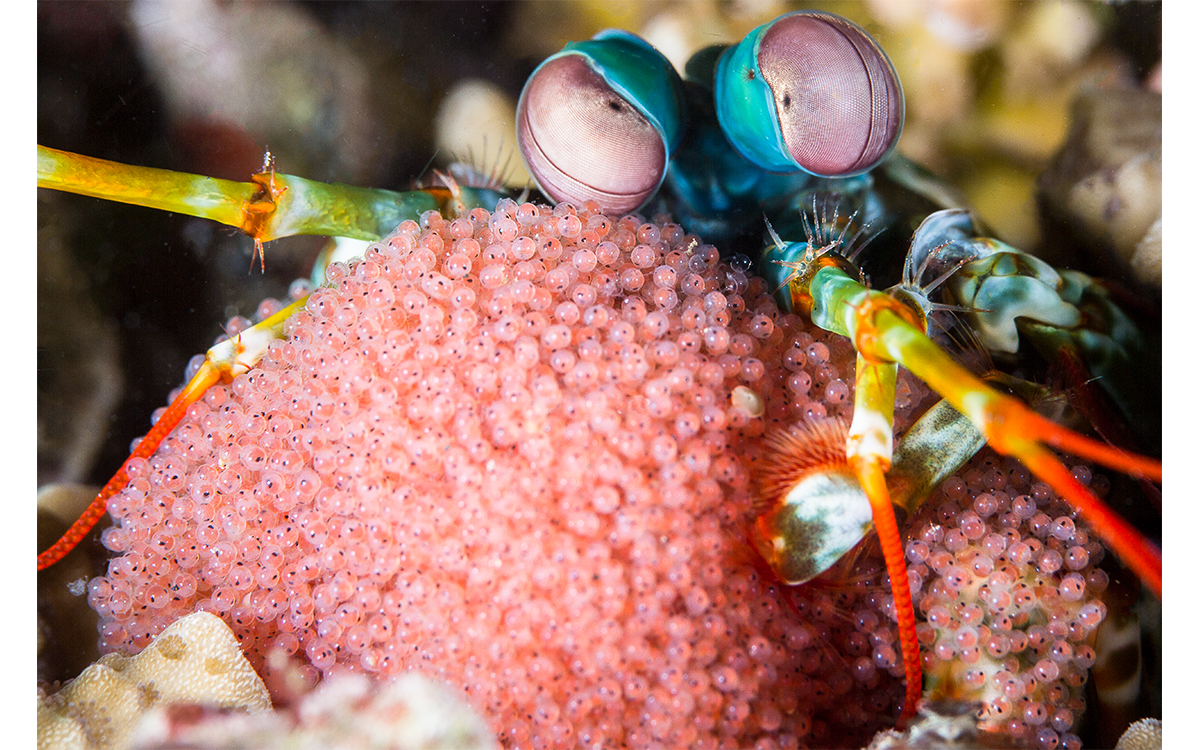
A pink mantis shrimp in Indonesia
To that end, she posts photos daily on Instagram for her 148,000 followers, often accompanied by short descriptions and educational tidbits.
Aside from educating people about the ocean and its inhabitants, Aly has another mission—to see more diversity in the profession of underwater photography. “I find that there are a lot of challenges as a female photographer, and as a woman of color as well,” she said. “I just feel like there are all these hurdles I need to jump through.”
The bias manifests in conferences that only feature male speakers, and media outlets that work solely with male photographers, and in countless other ways that all add up to fewer opportunities for female underwater photographers and female photographers in general—a frustrating and self-perpetuating cycle that Aly says shuts out unique sensibilities. “In my head, I'm like, ‘Come on, guys, I know tons of underwater photographers who are female. Why is this happening?’”
That unique sensibility is on full display in a photo Aly took in Indonesia of a pink mantis shrimp. As viewers, we stare directly into the creature’s enormous, slightly askance eyes as it hugs a pile of delicate pink eggs. By shifting the angle, Aly snapped shots of the mantis shrimp with and without the eggs, but her favorite one includes them. “When the focus is on the eggs, you feel more maternal,” she said. “There's more of a family kind of feeling.”
 The Magazine of The Sierra Club
The Magazine of The Sierra Club
